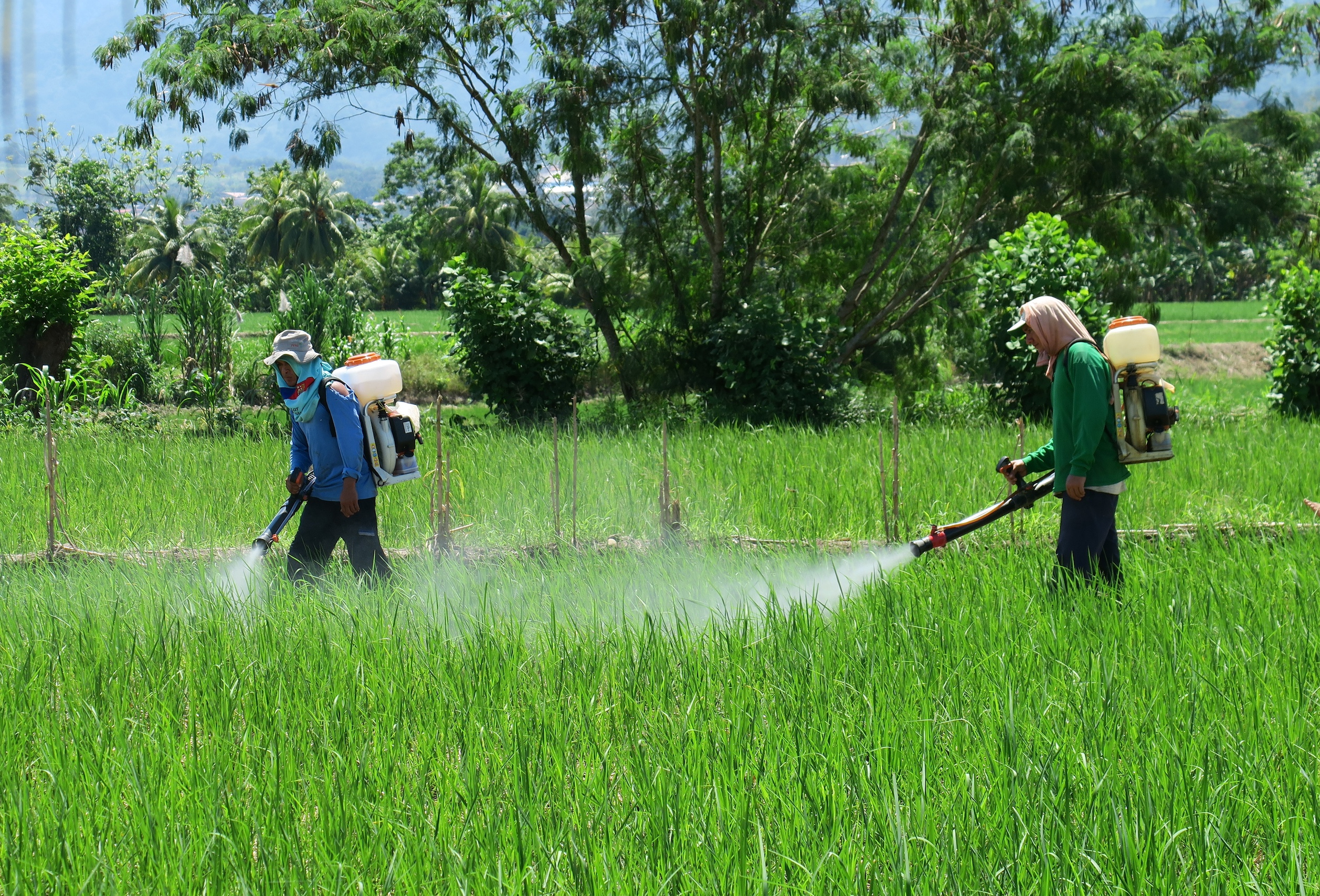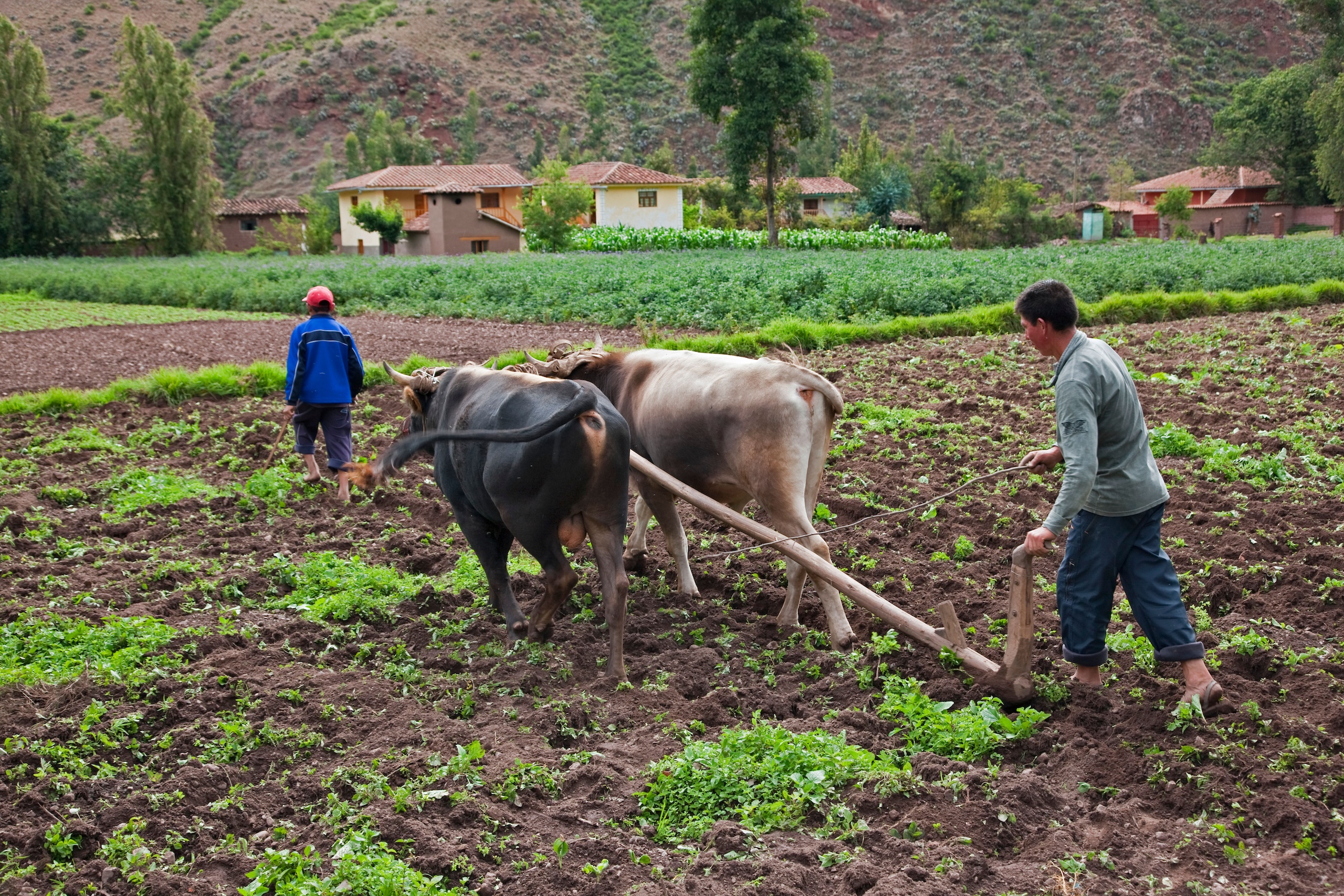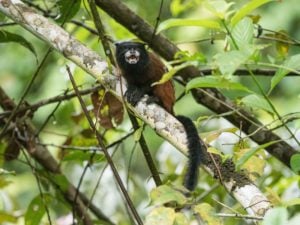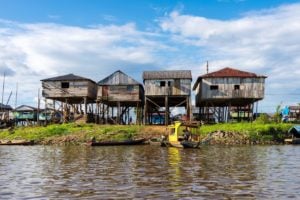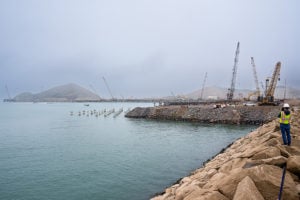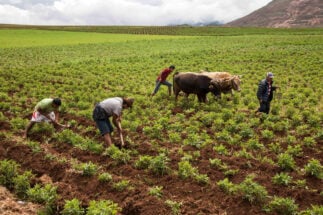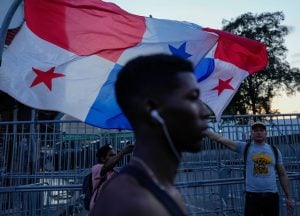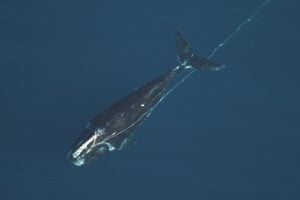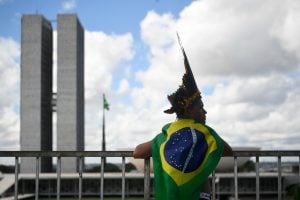A worn cloth rag was the only protection used by a young Lorgio Ñaupas during his early years spraying pesticides in cotton fields. Looking back decades later, he recalls unpleasant memories.
“I almost died once. I was spraying for a whole week, I had a headache and was vomiting,” says the 57-year-old, who now works on a farm in the Chillón Valley, north of Peru’s capital, Lima. He also remembers the day he accidentally spilled paraquat, a herbicide, on the leg of one of his sons, wounding him and leaving a scar that remains to this day.
Ñaupas says his bad experiences were a reminder that pesticides are not only a potent poison for pests and weeds, but also potentially dangerous chemicals that can have damaging impacts on health and the land. They motivated him to dedicate his work to agroecology, which promotes more sustainable practices that encourage reductions in pesticide use.
“Why do we allow dangerous agrochemicals, and aren’t there other ways to avoid poisoning ourselves?” Ñaupas asks.
For this investigation, led by Salud Con Lupa in collaboration with Dialogue Earth, we began by analysing the pesticide market in Peru. What was most striking is that the system for evaluating and authorising pesticides in many countries allows large companies, such as the Switzerland-based, Chinese-owned company Syngenta, to register and sell pesticides that are otherwise banned in their home countries, taking advantage of more permissive regulations such as those in Peru.
Unlike countries such as Chile and Costa Rica, or the European Union, Peru does not issue authorisations for the use of individual pesticides for ten-year periods; rather, many of its pesticide registrations have been valid indefinitely since the 1990s.
This means that after a company receives authorisation to sell a product, its impacts will not be re-evaluated with more recent scientific information or studies, unless extraordinary initiatives to do so are launched by regulatory bodies. Under these regulations, Syngenta currently has registrations in Peru for the sale of 42 pesticides that are banned in the EU and Switzerland.
Why do we allow dangerous agrochemicals? Aren’t there other ways to avoid poisoning ourselves?Lorgio Ñaupas, farmer
In 2011, Peru updated its pesticide registration system to bring it into line with environmental parameters required by the Andean Community. But the country’s Ministry of Agrarian Development and Irrigation (Midagri) did not make any substantive changes to strengthen its system for the evaluation of agrochemicals, or to make this more transparent. Peru’s evaluation processes have tended to prioritise studies and tests presented by manufacturers, rather than independent studies by scientific experts in the field.
Another notable problem is that the clinical trials and references on which Peru’s pesticide approvals are based have not been made public. Salud Con Lupa’s investigation therefore relied on Peru’s Law on Transparency and Access to Public Information in order to request the state to release files that have supported the agrochemical registrations granted to Syngenta in the country.
Under its current evaluation system, in the past decade Peru has only restricted nine pesticides for their potential risks to human health and the environment, while in the European Union 119 agrochemicals have been withdrawn in the same period. This is evidenced by the case of the pesticide paraquat, one of Syngenta’s best-selling products, and reported to be 28 times more toxic than the more widely controversial glyphosate. Peru is among the Latin American countries that have used paraquat since the 1990s, and only banned its sale in 2021, despite the fact that scientific evidence of its harmful effects has existed since 1983.
However, during this investigation we found that paraquat – the same pesticide that injured Ñaupas’ son – continues to circulate in Peru, as it is easily smuggled across the land border with Ecuador, where its use is still authorised.
“When the heart of palm crop is sprayed with paraquat, our eyes burn and then we get dizziness and severe diarrhoea,” says Frobin Gil. He is a farmer in Pedro Vicente Maldonado, a canton in the Ecuadorian province of Pichincha, and an area known locally as “the capital of the heart of palm”, the tender white vegetable popular in salads. Gil told Salud Con Lupa he was unaware that the pesticide he uses to fumigate the heart of palm is already banned in Peru and other parts of the world because of its high toxicity.
A similar situation is seen in the municipality of General Lagos, in the Argentine province of Santa Fe, where herbicide-resistant soybeans and vegetables are grown. Paraquat is also applied here, with its use still permitted in the country.
“If the tomato plant is too tall and I have to spray the pesticide on top, it falls on my face – I have to wash right away because it burns so much,” says Miguel Romero, who fumigates crops on a local farm.
Peru’s permissive system
When a company applies for registration of an agrochemical to sell in Peru, it submits its dossier to the National Agricultural Health Service (Senasa), which is responsible for authorisation and the monitoring of conditions under which food is grown. Senasa will respond based on its own assessment and those of two other bodies: an environmental assessment carried out by the Directorate of Agricultural Environmental Management (DGAA), a body under Midagri; and a human health impact assessment carried out by the General Directorate of Environmental Health and Food Safety (Digesa), which sits under the Ministry of Health.
The evaluations done by these directorates are mainly based on reports and studies attached to the dossier by the pesticide manufacturer. Under Peru’s current system of one-time authorisations for pesticides, if the application is approved, it will likely never have to go through another review in the country. When Salud Con Lupa reviewed the reports supporting the registration authorisations of Syngenta’s best-selling pesticides in Peru, we found that most of them were based on old studies, some dating back four decades.
For example, the use of the herbicide diquat – banned in EU countries in 2019 and in Switzerland since 2022 – has been permitted in Peru since 2015, with a dossier based on studies carried out in 1985, which suggested that it was not a hazardous substance. In the same year that Peruvian regulatory authorities gave diquat the go-ahead, studies in the European Union described exposure to the pesticide for those working with it as a “critical area of concern”, suggesting that it could potentially cause disruption to human hormone systems – an accusation that has been disputed by Syngenta.
Another case is the pesticide atrazine, which is already banned in 44 countries around the world, including Switzerland, largely due to concerns over risks of its contamination of water sources. In 2004 it was banned in the European Union, but two decades later it is still used in Peru, where its impact on water is not monitored. Syngenta was one of the first companies to register atrazine in Peru in the 1990s.
A similar situation occurs with mancozeb, a blue-coloured fungicide, banned in Switzerland since 2021. In the past two years it has risen to prominence in Peru, after traces of the substance have been found in spring onions sold in several markets. Senasa has not reviewed the authorisation of mancozeb in a Syngenta product since 2016, when its permit was updated, despite scientific evidence indicating negative effects on the endocrine system.
Peru has also authorised new registrations for the heavily contested pesticide glyphosate, despite the fact that its description as “probably carcinogenic” by the World Health Organisation (WHO). In 2023, the use of glyphosate was extended for 10 years in the EU, with Syngenta and seven other chemicals companies reportedly having lobbied to influence technical opinions about the risks posed by its use. Glyphosate also remains in use in Switzerland, with Swiss voters having rejected a nationwide ban on all synthetic pesticides in 2021.
Influential industry
In Peru, pesticide manufacturers manage their interests through Cultivida, an association of 23 companies currently chaired by Syngenta. Between February and November 2023, Cultivida held a series of meetings with officials from Midagri to offer the state access to two digital tools that can be used to assess the environmental risks of their pesticides.
The proposal was finalised on 11 April this year with the launch of a web platform that Midagri presented at a closed-door event attended by representatives of agrochemical and business organisations. The first model proposed by Cultivida quantifies the levels of pesticide residues left in surface water by rainfall, while the second calculates the impact of pesticide substances on soil and water sources around crops.
Midagri opted to incorporate the latter proposal into its web platform as an evaluation criterion to be used prior to the registration of a pesticide. The ministry did not mention that among the organisations supporting the development of the programmes was CropLife, the international association of agrochemical producers of which Cultivida is part, and which includes Syngenta, alongside fellows such as Bayer, FMC, BASF, Sumitomo Chemical and Corteva Agrosciences.
When approached by reporters for comment, Cultivida denied the suggestion that these manufacturers are interfering in the Peruvian pesticide evaluation system with such donations or gifts of software tools. But some civil society organisations warn that these activities count as interference.
“Pesticide manufacturers offer these tools as an alibi to say that they are controlling how pesticides are applied on crops,” says Juan Sánchez, a consultant in rural development policies and current director of the Peruvian Organic Agriculture Network.
Jaime Delgado, a lawyer and former president of ASPEC, a Peruvian consumer rights NGO, says that if the Peruvian state intends to change the process of environmental assessment of pesticides, it is not appropriate for it to be reviewed or consulted with the companies that will then be inspected.
Lack of transparency
In addition to Peru’s indefinite registrations of pesticide authorisations, another issue arises in the lack of transparency around the permits granted. Unlike in the European Union, in Peru the studies and sources used to apply for pesticide registration are not made public. Salud Con Lupa therefore relied again on the Law on Transparency and Access to Public Information to request the release of these documents.
On reviewing the documentation, signs of a possible “revolving door” between government and industry were seen within Midagri’s Directorate of Agricultural Environmental Management (DGAA), the body in charge of assessing the environmental impacts of pesticides in Peru. Juan Carlos Arévalo Rengifo, who has worked at the DGAA since 2018, and has written at least four favourable reports to register Syngenta’s pesticides atrazine, brodifacoum, cyproconazole and profenofos, previously worked for Syngenta as an agricultural representative between 2014 and 2016.
While working for Syngenta, he provided technical assistance on the use of pesticides on agro-industrial and traditional crops, trained farmers on the safe handling of agrochemicals and also marketed these substances. Arévalo then carried out similar work in the agrochemical companies Novagro and Neoagrum before joining Midagri.
According to labour lawyer Ricardo Valderrama, this situation would represent a conflict of interest, as an official who has worked in a company has then evaluated its applications. “If he has not abstained and it is determined that there is a conflict of interest, he could even be dismissed,” he says.
Arévalo was approached for comment about the possible conflict of interest. He said there was no reason to suggest this, as he worked at Syngenta in the sales area, and not on registration issues, which is what Midagri evaluates.
He added: “The reports are also reviewed by the coordinator, the legal specialist and the director [all of the DGAA] precisely to avoid any favouritism. As I have no family, friendship or business relationship with the companies, my objectivity, good faith and judgement were not affected at the time of my work.”
Midagri and Syngenta Peru were approached for comment on all issues raised in this investigation. At the time of publication, no response had been received.
This article has been produced by Salud con Lupa in collaboration with Dialogue Earth.
